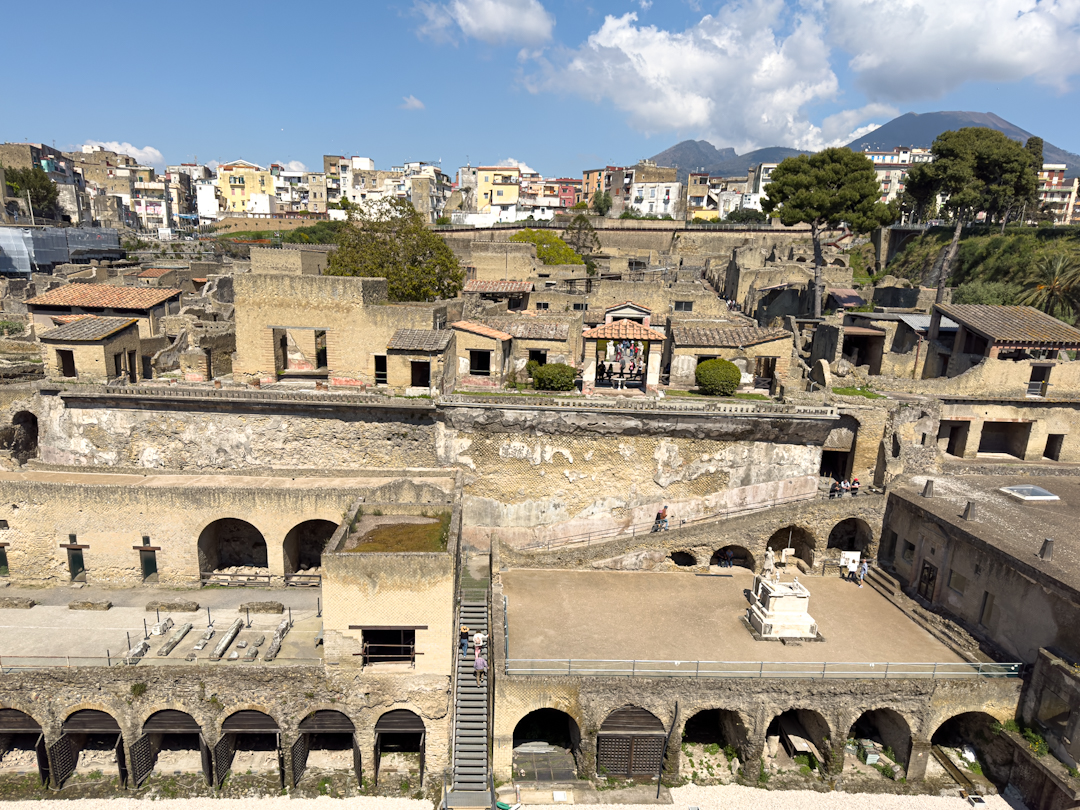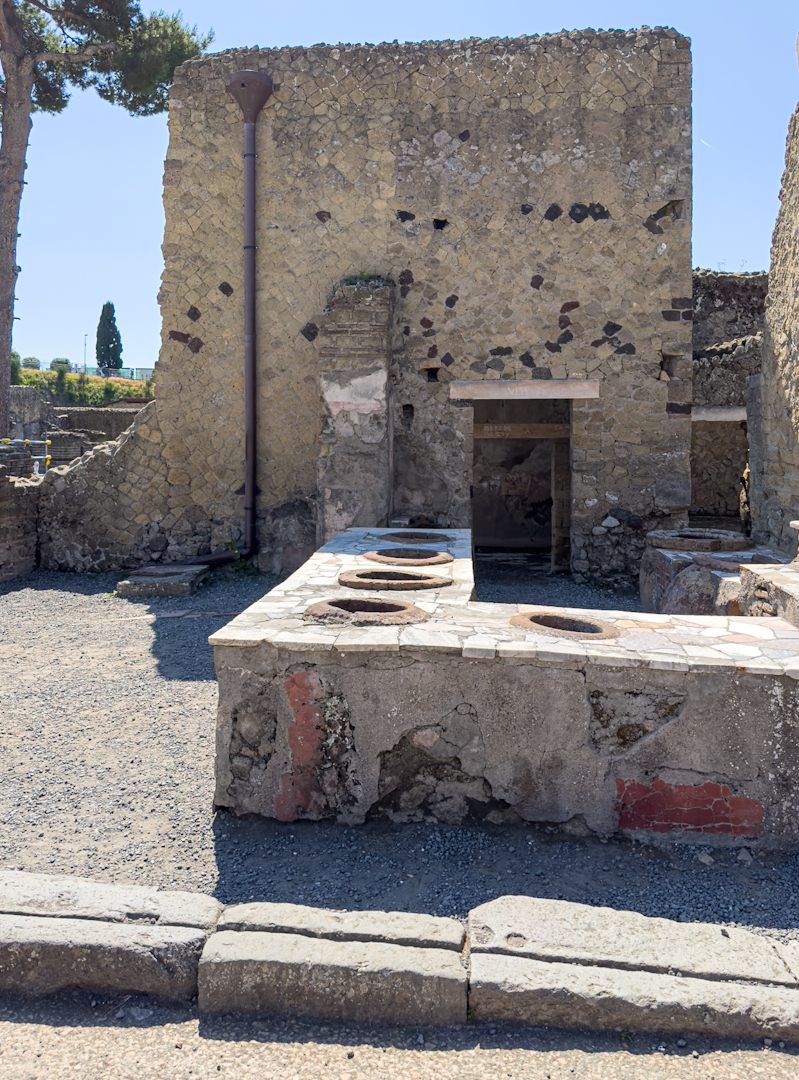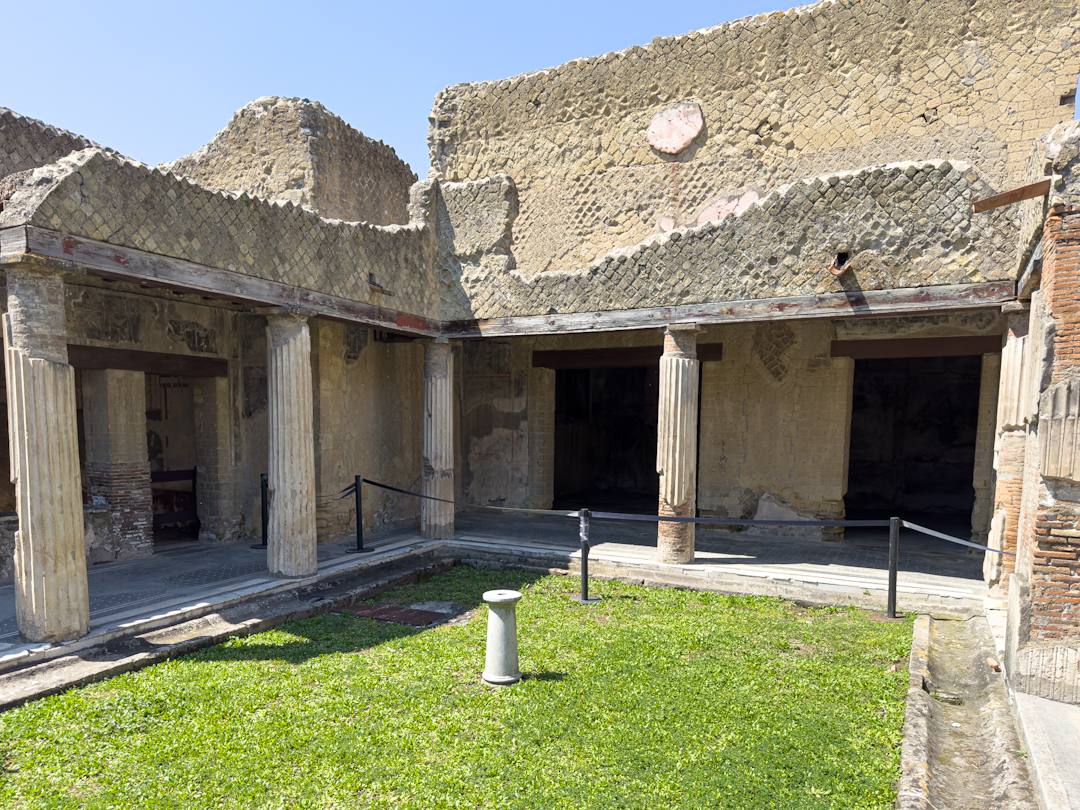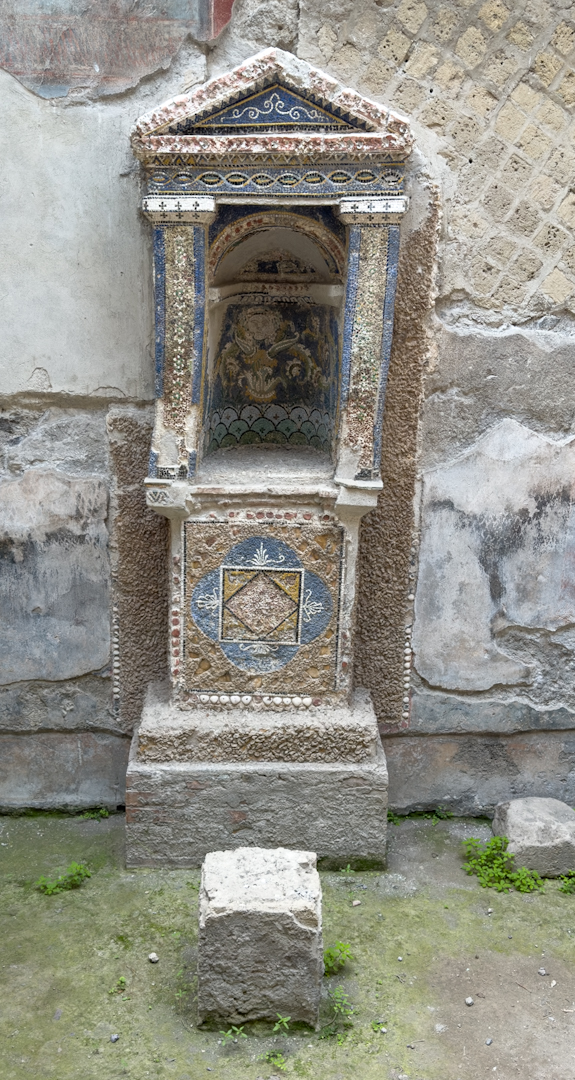Thursday 20th April
Although Camping Zeus is small and fairly cramped, Sarah has found a completely different area of the campsite, used for tents at the height of the season, which is totally empty and fantastic for playing ball with Skye.
Herculaneum does not accept dogs, and since we have not been there for over 20 years, I was interested to see whether they had made further excavations. Sarah generously agreed to stay at the campsite with Skye, which also enabled her to catch up with the washing, while I went to Herculaneum.
Our campsite is only 50 m or so from the railway station, where there is a regular service both to Sorrento and Naples, with stops at Herculaneum and many other places. So within half an hour, I was at the entrance to the ancient city.

Like Pompeii, Herculaneum was wiped out when Vesuvius erupted in 79 A.D. The different way in which the pyroclastic flows engulfed, Pompeii and Herculaneum means that Herculaneum is much better preserved than the ruins of Pompeii, and even some organic material, such as wood, food, and even papyrus, scrolls have survived, albeit in a burnt condition. It also means that many of the buildings retain their second stories.
There was also a fundamental difference in the two towns before they were buried. Pompeii was a much larger settlement, acting as a port, whereas Herculaneum was a resort by the sea for wealthy Romans, and therefore has a high concentration of large villas for its wealthy inhabitants.

When you arrive at the site, it appears that the whole town is located in a deep pit. This is evidence of how much the surroundings have risen since 79 A.D, no doubt, partially due to deposits from the intermittently erupting mount Vesuvius. Only a part of the ancient town has been excavated, because the outskirts of Naples has been built over the site before her Herculaneum was discovered.
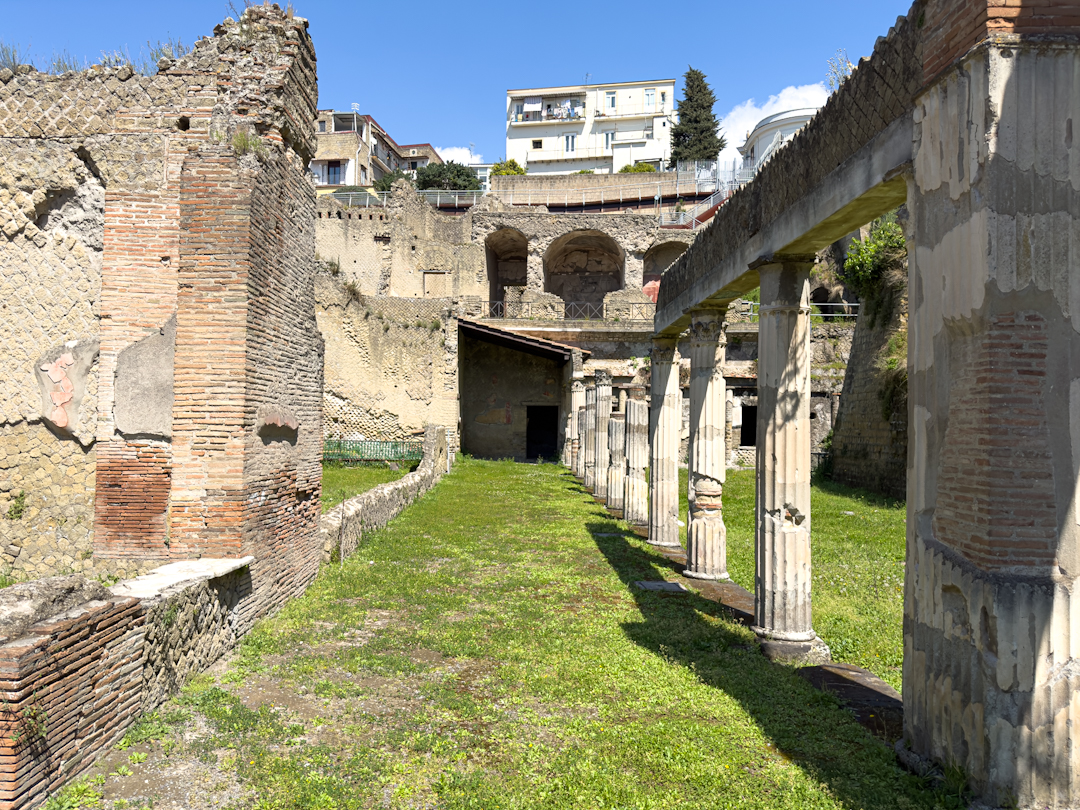
As I walked around the streets of Herculaneum it was not particularly crowded, unlike the throngs we had seen entering Pompeii, just outside our campsite. There are a range of building types, mostly related to domestic activities rather than commercial ones. A few Roman “pubs“, public baths (of course) but most of the other buildings are domestic dwellings of one type or another.
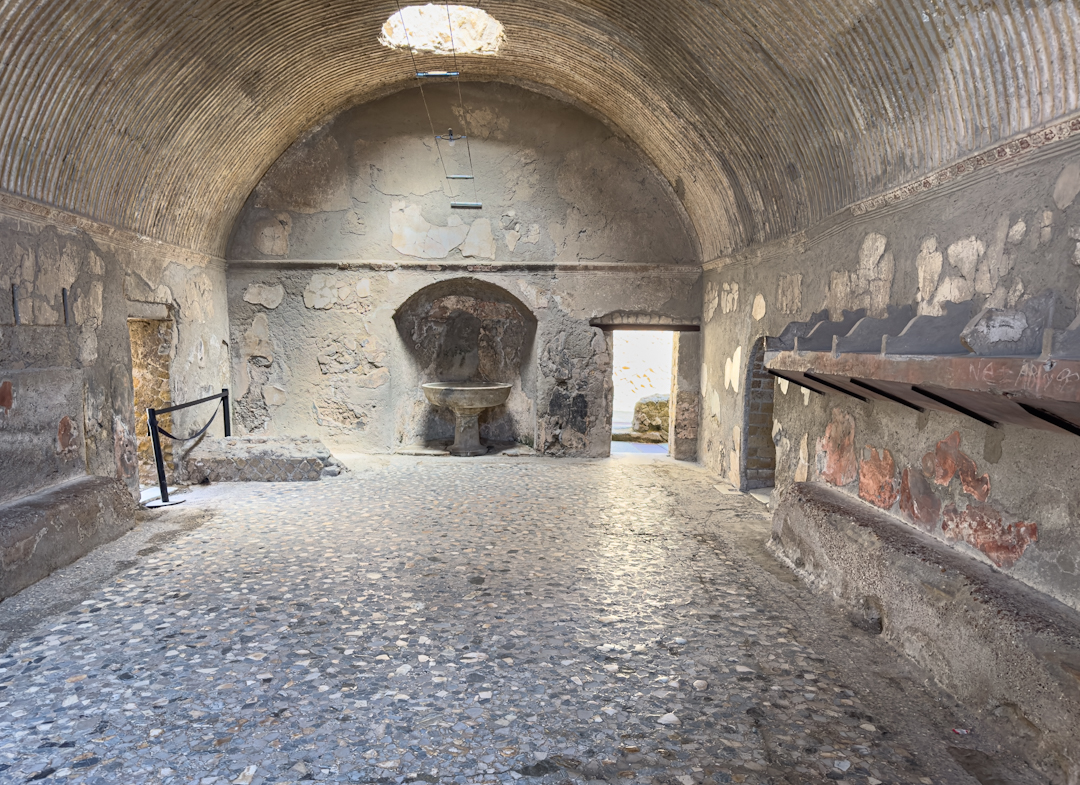
Those occupied by wealthy citizens are very large and usually surround a central courtyard. It is also noticeable that many of the buildings still retain some of their 2000 year old frescoes!
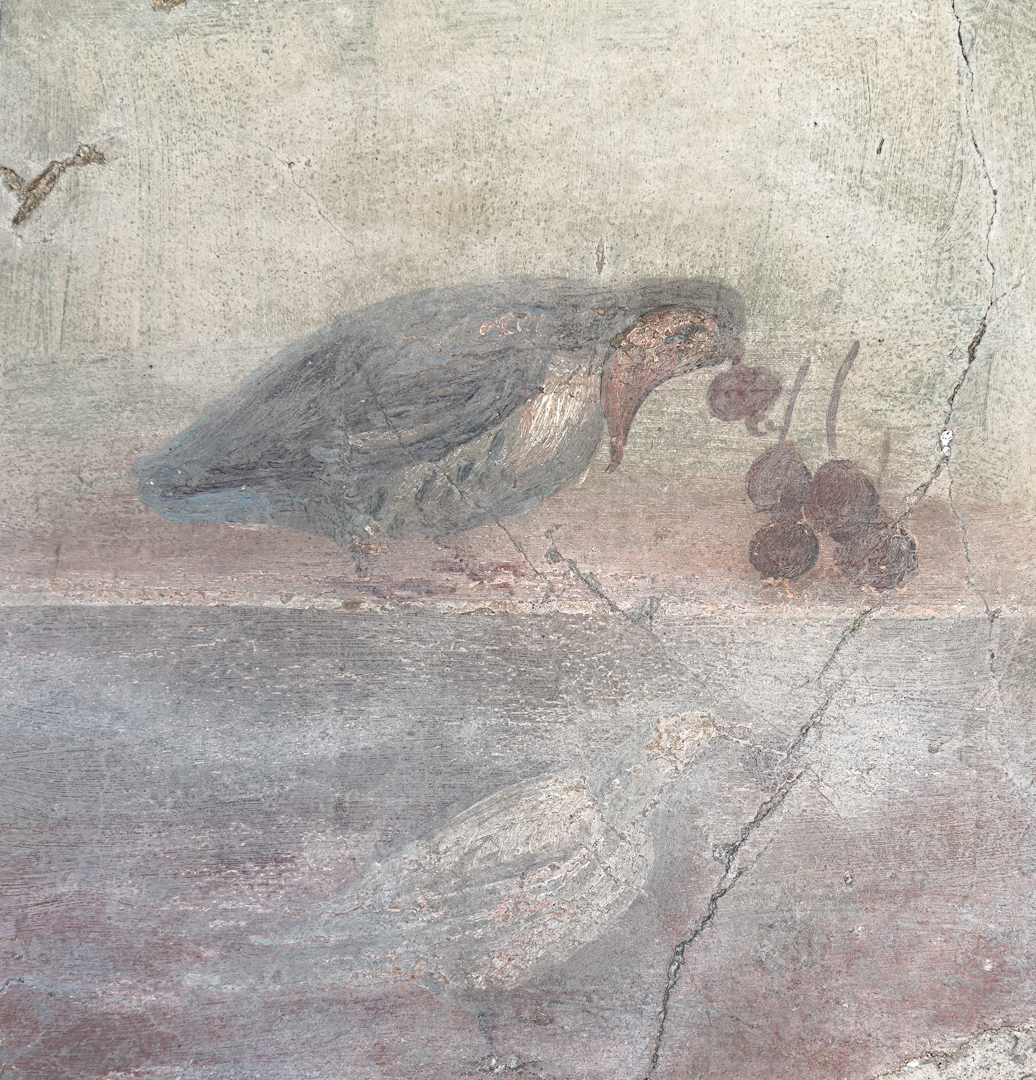
Although many of the buildings do still have their second story none of them are currently accessible. My recollection from our previous visit was that at least one of the buildings allowed you to ascend to the second level, so this was a bit of a disappointment.
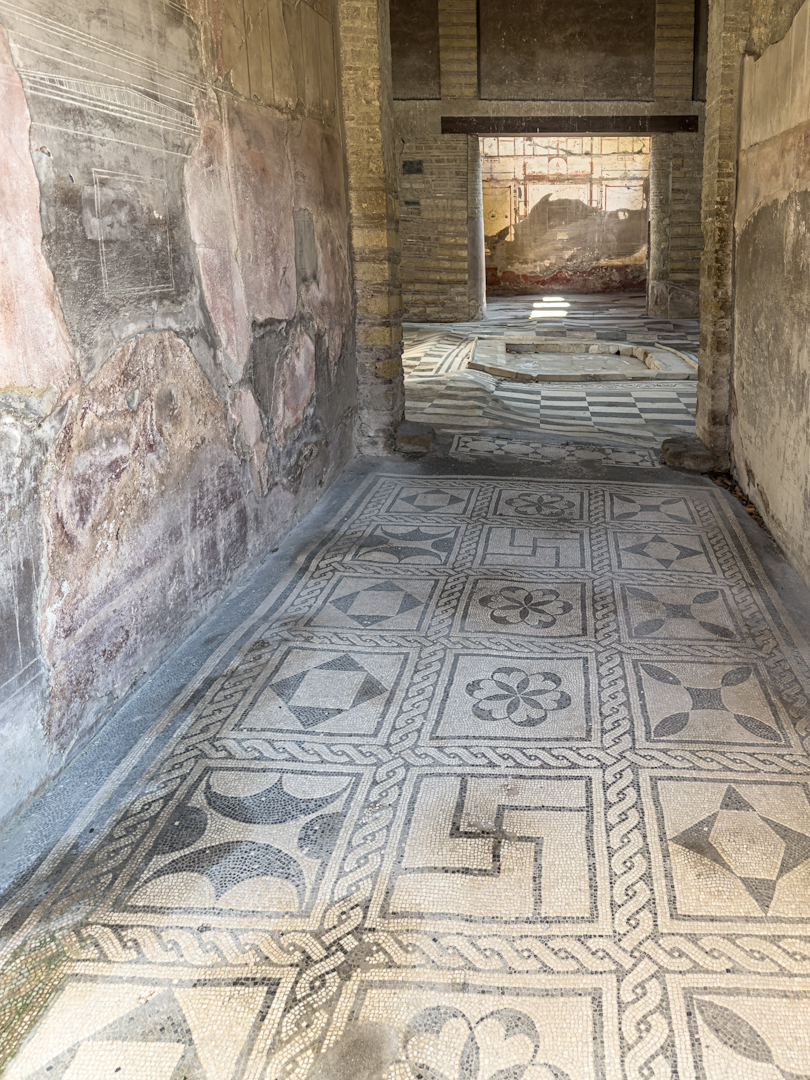
Because Herculaneum has only partially been excavated and the fact that it was smaller than Pompeii in the first place, means that it only takes two hours or so to thoroughly explore the site.
My return journey to the campsite was uneventful, other than having to stand for the journey due to the train being packed full of college students and school children. In the last two years I have been offered a seat, due to my advanced age, twice. Not on this occasion.
Back at the campsite we were already considering cutting our stay short and departing tomorrow when a campsite official came to tell us that Basil was parked incorrectly and that we would have to move him tomorrow morning. That, and the fact that the site was becoming extremely crowded, made up our minds to move on tomorrow.
